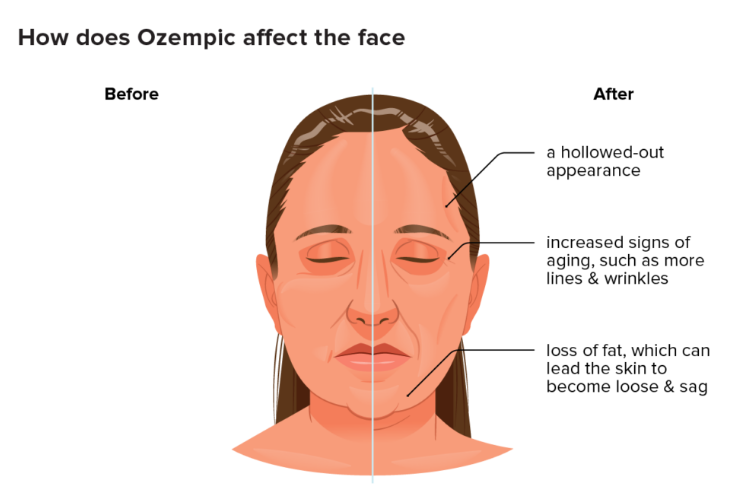In the world of fast weight loss, a new term is making headlines — Ozempic Face. As more people turn to medications like Ozempic, Wegovy, and Mounjaro to shed pounds, plastic surgeons are noticing an unexpected side effect: significant changes to the face.
But what exactly is Ozempic Face, why does it happen, and what can be done to fix it? We asked leading plastic surgeons to share everything you need to know.
What Is Ozempic Face?
Ozempic Face refers to the hollow, saggy, or aged appearance some people develop after rapid weight loss triggered by GLP-1 medications like Ozempic. While the body becomes slimmer, the face can lose essential fat that keeps it youthful and full.
According to plastic surgeons, this facial transformation can leave patients looking older, tired, and even unhealthy — despite achieving a healthier weight.
Why Does It Happen?
The answer is simple: fat loss.
When you lose weight quickly, you don’t just lose fat around your waist, thighs, or arms — you also lose it in your face. The cheeks, temples, and under-eye areas are particularly vulnerable. Without the supportive “padding” of facial fat, the skin can sag and fine lines become more noticeable.
Age also plays a big role. People over 40 naturally have lower collagen levels, making it harder for the skin to bounce back after weight loss.
How Plastic Surgeons Fix Ozempic Face
Luckily, Ozempic Face is not permanent — and there are several effective treatments that plastic surgeons recommend, depending on the severity of the changes.
1. Dermal Fillers
For mild to moderate cases, dermal fillers are the first line of defense. Products made with hyaluronic acid can restore lost volume in the cheeks, temples, and under the eyes. Results are usually immediate and can last from six months to over a year.
Popular filler brands include Juvederm, Restylane, and Versa.
2. Biostimulatory Injectables
If you’re looking for something longer-lasting, surgeons may suggest biostimulatory injectables like Sculptra or Radiesse. These treatments stimulate your body to produce more collagen, gradually improving skin thickness and elasticity over time.
3. Skin-Tightening Treatments
Loose skin is another major concern with Ozempic Face. Non-surgical options like ultrasound therapy (e.g., Sofwave) or fractional CO2 laser treatments can help tighten and firm the skin without surgery.
These procedures encourage collagen remodeling, giving your skin a firmer, more youthful look.
4. Surgical Solutions
In more severe cases, non-invasive methods might not be enough. Some patients may opt for:
- Facelifts or mini-facelifts to remove excess skin and reposition tissues
- Fat grafting, where fat is taken from another part of the body and injected into the face for natural volume restoration
- Neck lifts if sagging is prominent in the jawline and neck area
Plastic surgeons recommend waiting until your weight has stabilized before considering surgical options to ensure the best and most lasting results.
Can You Prevent Ozempic Face?
While you can’t completely stop facial changes during major weight loss, you can minimize their impact:
- Lose weight gradually if possible
- Maintain a good skincare routine with products that support collagen production
- Stay hydrated and nourish your skin from the inside out
- Consult with a dermatologist or plastic surgeon early if you notice changes
Final Thoughts
Ozempic and similar medications have helped thousands achieve life-changing weight loss. However, the unexpected side effects like Ozempic Face show that every major body change comes with its own set of challenges.
If you’re concerned about how weight loss is affecting your face, talk to a board-certified plastic surgeon. They can create a custom plan to help you look and feel your absolute best — without sacrificing the incredible health benefits you’ve worked so hard to achieve.



